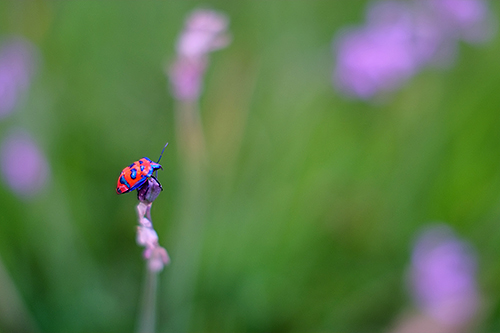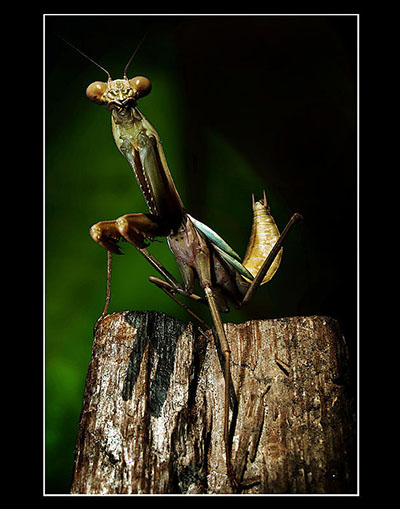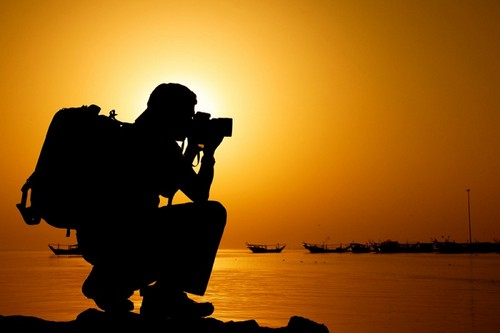
Macro photography or macro photography is a photograph taken with a very close range to capture high detail on the size of small objects such as insects, dew drops, the composition of wooden pencils and etc. Macro image usually has a ratio of 1:1 where the resulted image is in the same size as the original object.
Currently, Macro Photography is well-liked by people because it can show the other side of the object surrounding us, especially the macro photos of insects. The photos are beautiful and unique and in addition, it also has considerably high economic value. Some of them are even included by environmentalists for environmental conservation campaigns.
1. SELECTING A PROPER LENS
Creating a macro photograph or micro picture, called some camera manufacturers, requires a proper lens. There are several manufacturers who offer great specialist macro lens. The macro lens is helpful in clicking the close-ups of insects attractively and emotionally.
2. CAMERA SETTING
There are several things to consider in setting up the camera while shooting insects.
– First, use a diaphragm that is not too wide, f / 5.6 for example so that we can get the details of the insect.
– Second, use a shutter speed which is adequately fast, because when you perform the macro shooting on insects, little shakes will be able to result a blurred or not so sharp image. Use at least 2x longer focal length lens. Suppose you use a 50mm lens then at least use a shutter speed of 1 / 100s, apart from that turn on the image stabilizer feature if possible.
– Third, because we are going to shoot a small object, then spot metering is the suitable one. ISO settings, by adjusting the aperture and shutter speed, auto ISO could be the correct choice.
– Fourth, use the highest camera resolution (maximum). It is necessary, especially if we do not have a macro lens. You can crop the photo to get the objects which look much closer and detailed.


3. APPROACH THE OBJECT STEP BY STEP.
If you find the object of insects, do not approach it in haste. This will only make the object becoming restless and wild. Come closer, step by step, and try not to make sudden movements so that the objects feel safe and do not think of our presence as a threat.
4. PATIENCE, PATIENCE AND TOLERANCE
There are lots of interesting insects that will give you monumental photos. Unfortunately, these insects cannot be easily managed. You cannot warn them, “hang on!” or, tell “go around a little bit to the left” to them. Inevitably, you often just have to wait until they get an interesting moment.
Even small sounds can disturb them. So be careful, move quietly and do not disrupt their activities. If necessary use a manual focus to reduce noises that may disturb them.
Sometimes you have to keep an eye on the insects for a considerably long time. And after the long wait, these insects can leave you and fly away.
It actually will test your patience. There is no guarantee that when you set out for hunting, you will quickly get macro photographs. But if you get the moment, it will be the most valuable surprise which is worth waiting.
5. FOCUS ON THE EYES, NOT THE INSECTS ONLY
These tips sound a bit strange and difficult. But if you can shoot close ups of their eyes in, it will give a new dimension and an interesting photographic experience.

As the saying goes, the eyes are the windows to the soul. It turns out that not only apply to humans but animals as well as small insects.
6. FIND AN ALTERNATIVE ANGLE
One of the big mistakes of shooting insects is from the upper angle which is done frontally. Perhaps, this angle will do justice for producing images of spiders, beetles, grasshoppers. But everything will look the same and less interesting without the touch of different angles.
7. DO NOT DAMAGE THEIR HABITAT
The important thing to do in a whole series of shooting is not to destroy the habitat of the insects. Step in with caution when approaching an object so that the plants there are not broken or damaged due to our movements. Well-preserved Habitat make insect remain well to stay there and we were able to visit to shoot them again and again. Of course, it will be very unfortunate if we cannot take images in the exact place of perched exotic habitats where we got good images from there before.
















